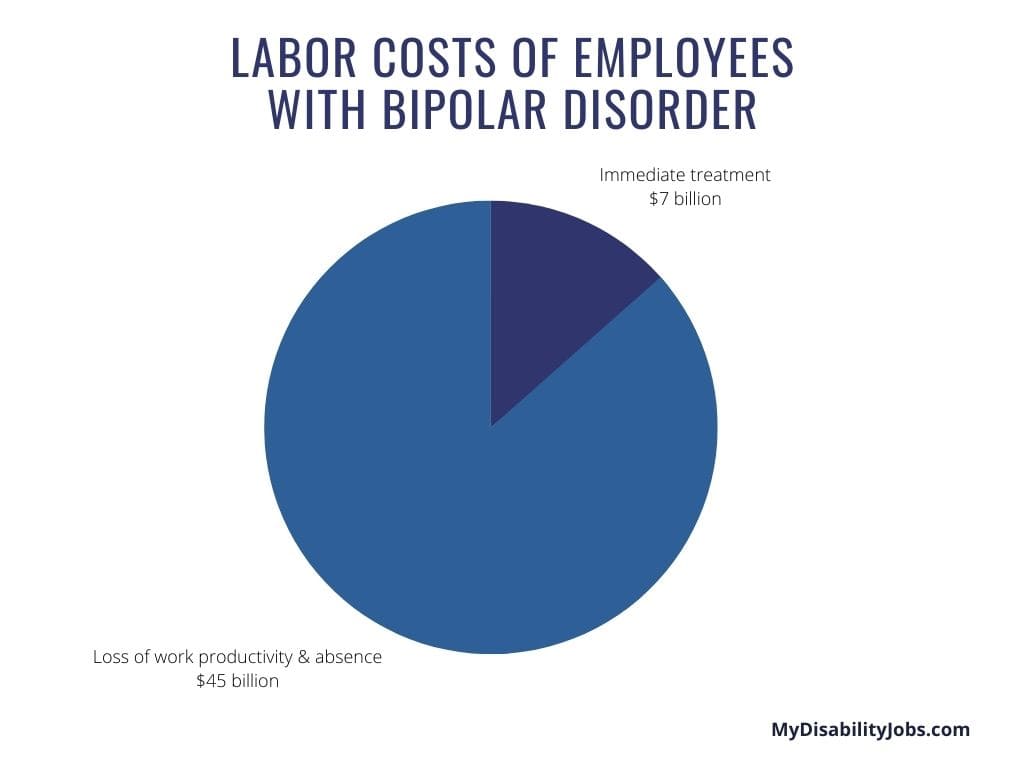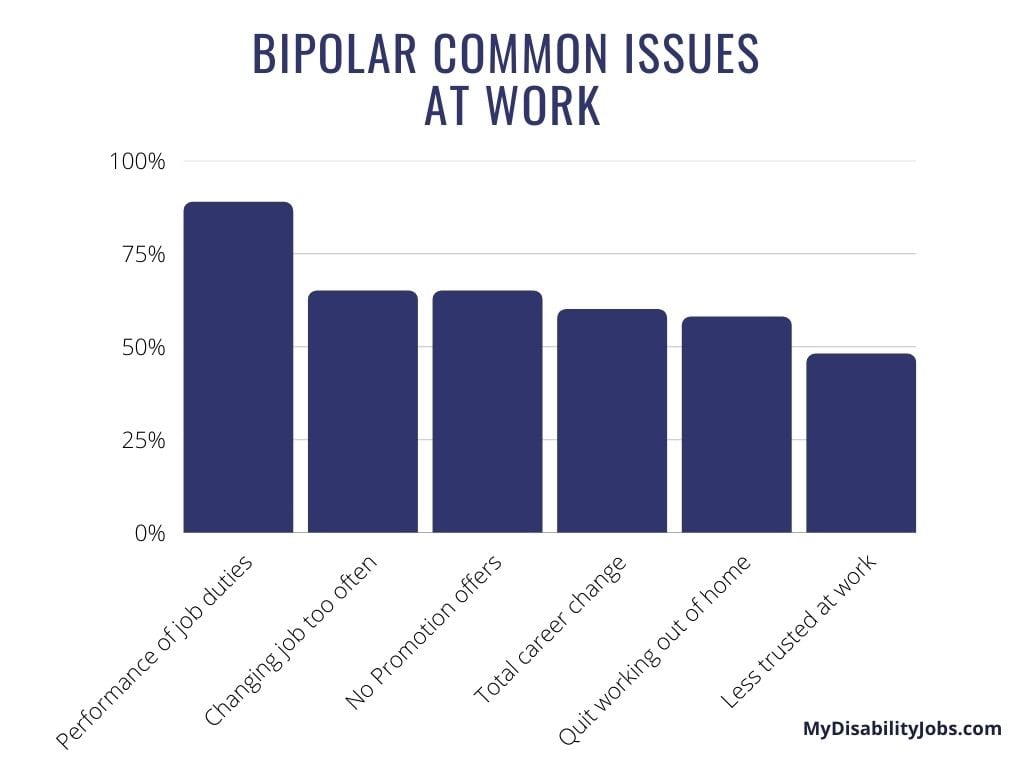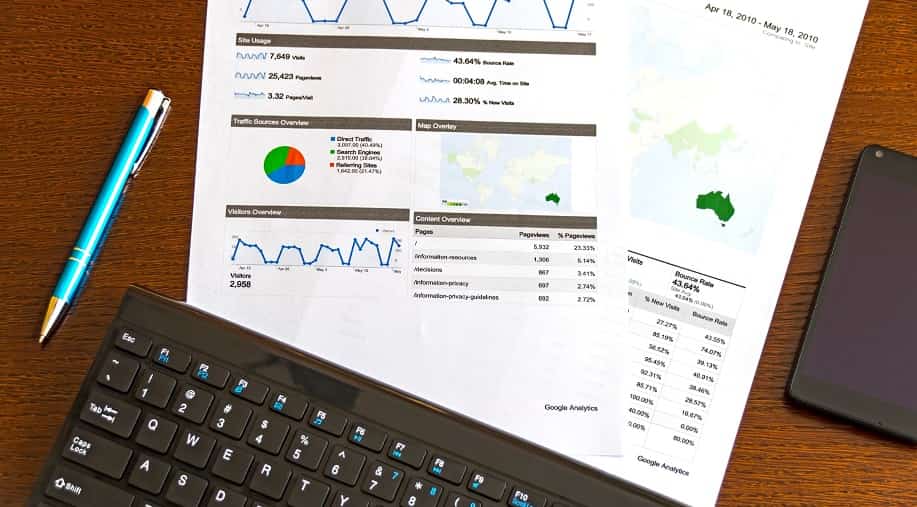Bipolar Disorder Employment Statistics – Update 2024
Bipolar disorder is a mood disorder that affects more than 45 million people worldwide. It is characterized by extreme mood, sleep, and energy swings. And while you may be thinking “I’m sometimes good and sometimes bad, I’m bipolar…” bipolar disorder is not as simple as ups and downs sometimes.
The ups and downs of people with bipolar disorder are severe and make it difficult for them to lead a normal life. All aspects of life are compromised, such as social, personal, professional, or work-related. In addition, it is a disease that carries high stigmatization, which becomes a further obstacle to the development of people with bipolar disorder.
Knowing that living with this disorder is not easy, let’s navigate the waters of the labor world and what it is like to work with bipolar disorder. Let’s get a clearer picture of how integrated they are into the job market and what that integration looks like.
In this bipolar disorder employment statistic roundup, you’ll learn:
General statistics of bipolar disorder
Unemployment among people with bipolar disorder
Labor costs of employees with bipolar disorder
Bipolar Disorder and Employment Issues
Is your company offering jobs for people with disabilities? As an employer, you can publish your job offers on MyDisabilityJobs and reach thousands of qualified candidates.
With that clear, here are the facts on bipolar disorder and the workforce. Let’s get started with some statistics:
Bipolar Disorder Employment Statistics (Editors Picks)
- Worldwide prevalence: the WHO estimated that by 2019 about 45 million people were diagnosed with bipolar affective disorder and it is the sixth leading cause of disability worldwide.
- Prevalence in the United States: according to the AJMC and the National Institute of Mental Health, bipolar disorder affects nearly 3% of the U.S. population aged 18 years and older, which is approximately 5.7 million American adults.
- Bipolar disorder and gender: Studies have found that men and women are equally affected by the disorder, however, women seek health services more than men.
- Severity of the disorder: Nearly 82% of people with bipolar disorder are severely impaired, while 17% are moderately impaired.
- Age of diagnosis: The average age of onset of bipolar disorder is 25 years, according to the National Institute of Mental Health. Although the illness can begin in early childhood or even in the 40s and 50s.
- Hereditary likelihood: More than two-thirds of people with bipolar disorder have at least one close relative with the illness or with unipolar major depression, indicating that the illness has a hereditary component.
- Relatively Stable Rate: According to the data, the rate of bipolar disorder has remained relatively stable in the U.S. with around 0.65 percent of the population suffering each year.
Unemployment Among People with Bipolar Disorder
The stigma of bipolar disorder can be reflected in statistics and studies about the difficulties patients have in finding employment.
Bipolar disorder is linked with higher rates of unemployment and job-related difficulties.
The studies are relatively few and not very recent, therefore making estimates of the current situation is complicated, and this has repercussions on knowing the actions needed to give patients with bipolar disorder better opportunities.
- A survey published in 2003 by the National Depressive and Manic-Depressive Association showed that approximately 60% of individuals with bipolar disorder were unemployed, even among patients with college degrees.

Here’s a full breakdown:
- Data from a large registry of patients in the U.S with bipolar disorder also demonstrated an unemployment rate of about 60%.
- Data from another US national sample showed that self-reported bipolar disorder was associated with a 40% reduction in the likelihood of paid employment.
- Annual income tends to be low, with 91% having earned less than $30,000 in the previous on year period.
- As compared to mildly impaired, a higher likelihood of unemployment was found for participants with moderate (95%), severe (95%), and profound (95%) disabilities.
Sources: The American Journal Of Managed Care, AJMC, MDPI
Labor Costs of Employees with Bipolar Disorder
Several studies have been conducted from the 1990s to the last decade to find the correlation between the work productivity of people with bipolar disorder and the cost to employers. The most salient aspects are the cost of medical services, the cost of medication, lost work productivity, and absences.
- It is estimated that bipolar disorder costs the country more than $7 billion for immediate treatment, and indirectly $45 billion in lost work productivity and absences.

- Bipolar disorder is the most costly of all mental illnesses.
- Bipolar disorder is the fifth on the list of the top ten most costly medical conditions in the U.S.
- A comparative analysis between 1998 and 2006 found that bipolar depression had the highest percentage (58%) of costs related to work absence or short-term disability.
- A 2007 study found that the overall medical cost of bipolar disorder is significantly higher than that of chronic illnesses such as depression, asthma, and coronary artery disease.
- A 2006 analysis identified that employees with bipolar disorder annually cost about $6000 more than employees without bipolar disorder and were more costly in every health benefit cost such as: insurance, prescription drug, sick leave, short- and long-term disability, and workers’ compensation.
- Individuals with bipolar disorder missed an average of 18.9 workdays each year, significantly more than employees without the condition, who missed an average of 7.4 workdays annually.
Sources: Psychiatric Services Journal, The American Journal of Managed Care
Bipolar Disorder and Employment Issues
According to a Depression and Bipolar Support Alliance constituency survey, the most common issues individuals face at work when diagnosed with bipolar disorder are:

- Performance of job duties is affected: 88%
- Changing jobs more often than other people: 65%
- Not being taken into account for promotion: 65%
- Completely changing career: 60%
- Quit working outside the home: 58%
- Given less responsibility at work: 48%
Source: DBSA
The Myth of Creativity
There is a widespread myth that people with mental disorders, particularly bipolar disorder, have exceptional creativity and are considered geniuses.
This stereotype often is moved to the work environment and creates certain expectations regarding their performance. While this may be a dangerous stereotype, let’s see what the numbers say:
- A 1988 study found bipolar spectrum patients to have significantly higher lifetime creative accomplishment than healthy controls on the Lifetime Creativity Scales.
- Research in 2005 found people with Bipolar disorder to have Baron–Welsh Art Scale (a creativity assessment) scores higher than healthy controls and comparable to graduate students in creative disciplines.
- In the Epidemiologic Catchment Area (ECA) study in 2010 of a representative sample of 13,700 people living in the United States, bipolar disorder was over-represented in the most creative occupations, such as painting, writing, and lighting design.
- It has been estimated that approximately 8% of people diagnosed with bipolar spectrum disorder might be considered creative.
Source: Clinical Psychology Review Journal
Some extras: Tips for Employers
The Center for Workplace Mental Health has created some tips for employers to deal with and help their employees with bipolar condition.
Check below:
- Provide and encourage a culture that tackles stigma and makes employee mental health a high priority, while keeping stress levels in check.
- Ensure mental wellbeing policies and procedures are in place and implemented. Aim to maintain a good work/life balance so employees have time for work, leisure, and relationships.
- Provide training to managers and employees on mental health awareness to normalize mental health in the workplace while ensuring everyone is comfortable responding to a person in need of support.
- Be flexible with work hours, schedules, and telework for employees with bipolar disorder, allowing longer or more frequent breaks and time off for therapy and related appointments.
- Offer added time management skills training for interested employees.
Source: American Psychiatric Association Foundation
Is your company offering jobs for people with disabilities? As an employer, you can publish your job offers on MyDisabilityJobs and reach thousands of qualified candidates.
Conclusions and Final Thoughts
This was the all in one of the available data and facts on bipolar disorder employment statistics. As you may have noticed, it does not sound like very encouraging data, and it seems that the commitment to evaluate updated numbers is not very present in the academic or social world.
Nevertheless, these data give us a good look at the situation and the difficulties faced by bipolar disorder patients when trying to enter the labor market.
What do you think of these facts? We read you.
Related articles:
How To Work With A Bipolar Coworker
How to Deal with a Bipolar Employee
Costs of Bullying and Harassment in the Workplace
Workplace Bullying Statistics Research & Facts
Intellectual Disability Employment Statistics
Disability and Depression Statistics
Mental Health and Employment Statistics
Disability and Employment Discrimination Statistics


leave your comment